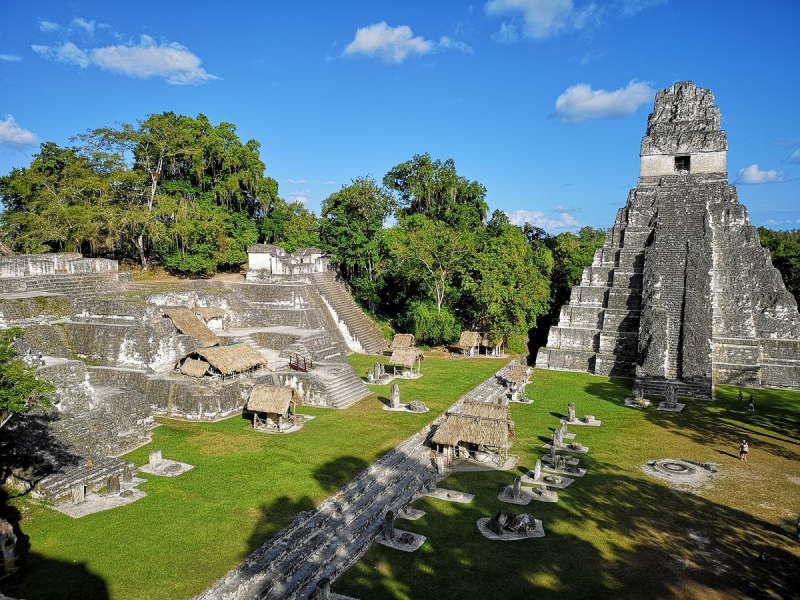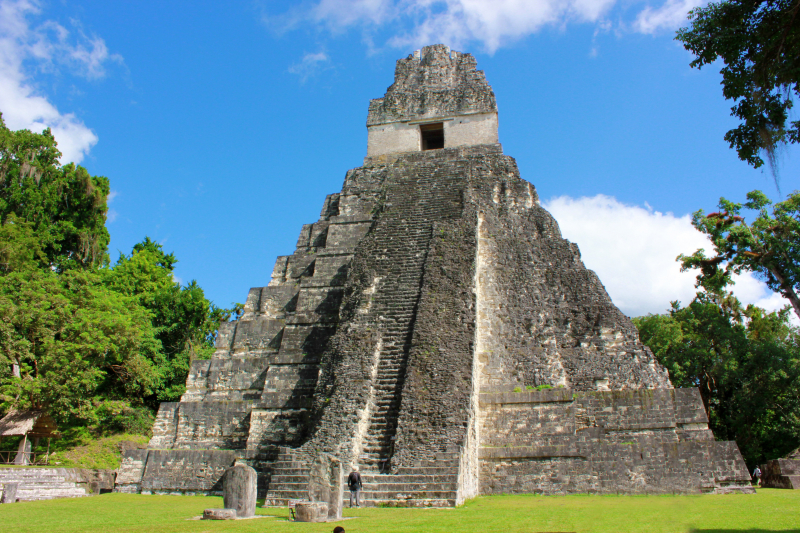Tikal
Tikal is the ruins of an ancient city in Guatemala's rainforest, which was most likely called Yax Mutal. It is one of the pre-Columbian Maya civilization's greatest archeological sites and urban centers. The complex is part of Guatemala's Tikal National Park and was designated a UNESCO World Heritage Site in 1979. It is a popular tourist destination and one of the most beautiful historical sites in Guatemala. It is located in the district of El Petén.
Tikal was the capital of a conquest state that grew to be one of the Maya's most powerful kingdoms. Tikal's monumental architecture goes back to the 4th century BC, although it reached its pinnacle during the Classic Period, from 200 to 900.
During this time, the city ruled over much of the Maya region politically, economically, and militarily, while interacting with other Mesoamerican cities such as Teotihuacan in the distant Valley of Mexico. Teotihuacan is thought to have conquered Tikal in the 4th century AD. There were no new significant monuments created at Tikal after the Late Classic Period ended, and evidence suggests that elite palaces were burned. These occurrences were accompanied by a progressive reduction in population, ending in the site's abandonment by the end of the 10th century.
With a long dynasty ruler list, the discovery of many of the kings' tombs, and the research of their structures, temples, and palaces, Tikal is the best-known of the great lowland Maya towns.
Location: Flores, Petén Department, Guatemala









